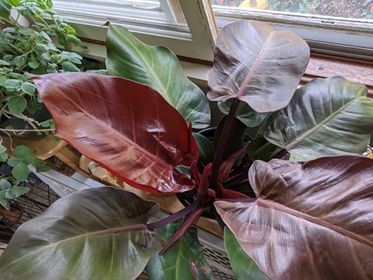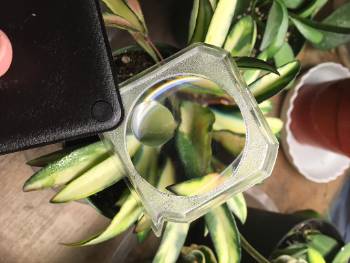Bringing Houseplants Inside in the Fall

The key to preventing insects from entering your house plants is to start early and use a multi-pronged approach to control the insects. The first step is to inspect your plants for insects and diseases. Remove any diseased or damaged leaves and any visible insects. Discard any plants with a severe insect or disease infestation to prevent those from spreading to other plants. As I get my plants ready, the second step for me is to use a systemic granule on any plants that have been outside. The plant will slowly take up this granule and provide a 2-3-month residual control for any insects that might be brought inside. I would also consider using an insecticidal spray on your plants a week or so before getting the plants inside to kill any bugs. If you prefer to go the organic route, use an insecticidal soap, while permethrin or pyrethroids are great synthetic chemicals. Right before you bring the plants in, I would wash them and soak the soil (only tropical plants do not soak the pot of any succulent or cacti). A strong stream of water from a garden hose will often remove most of our insect pests from the leaves, and soaking the pot in warm water for 15 minutes should handle any insects in the soil.
Along with ensuring we don’t bring in hitchhikers, we must transition houseplants to their new light conditions. Outside plants are exposed to high light levels, even in the shade, which might not be available inside. If possible, move them to areas with less light over a week before moving them inside. Once inside, place them in an area with as much light as possible, then slowly move them to their final winter spot. If you are using artificial lights to supplement natural light, you can skip the second transition when moving plants inside; however, it is still essential to transition them slowly outside to lower light conditions. No grow light has the same intensity of light as the sun, and the plants need to get used to it. Transitioning plants to lower light levels can prevent leaf drop and yellowing, especially if you transition them slowly. This slow transition also allows you to keep an eye on your plants and take care of any insects or other critters that might have tried to join you in your house.

As houseplants get inside for the winter, it’s easy to overlove our plants. When outside, plants needed far more water than inside simply because of warmer temperatures, wind, more light, etc. Once plants get moved inside, it can be easy to overwater them merely because we have habitually watered them more often outside. It’s also important to remember that many plants go into a semi-dormant or even dormant period during the winter, even if under grow lights, and their care needs will change drastically. As the fall and winter progress, be sure to monitor the soil moisture of your plants before you water. It gets very easy to get into a routine of watering on a specific day once a week or every other week, which may not be what your plant needs, especially as we transition from running the air conditioner to the furnace over time. Watering needs will also change throughout the winter because of the humidity levels in your house. Plants will dry out faster when there are lower humidity levels, so once the furnace comes on for the year, you must adjust your watering again. If possible, run humidifiers, both for your health and your plants, during the winter to combat the drying effect of the furnace on the air.
I love moving my houseplants outside during the summer. They provide a lush green jungle outside, and the extra light also helps them grow and bloom where they might not typically be inside. With just a few steps and some care, you can easily move your plants outdoors in the spring and back indoors in the fall. Starting early with transitioning plants inside and controlling bugs is essential because we never know what the weather will do from one week to another. While we are in the upper 90s to 100 now, we will see a significant cool down later this week, and who knows what next week will bring. It’s better to be prepared rather than rush at the last minute—just a reminder, indoor plants require less water and fertilizer during the winter months. Be sure to adjust your care as needed. Follow a few steps to keep your plants happy and healthy in their new environment.

Have questions? Contact our office where our Horticulture Extension Agent will assist you with questions.
Phone: (316) 321-9660
Email: callae@ksu.edu